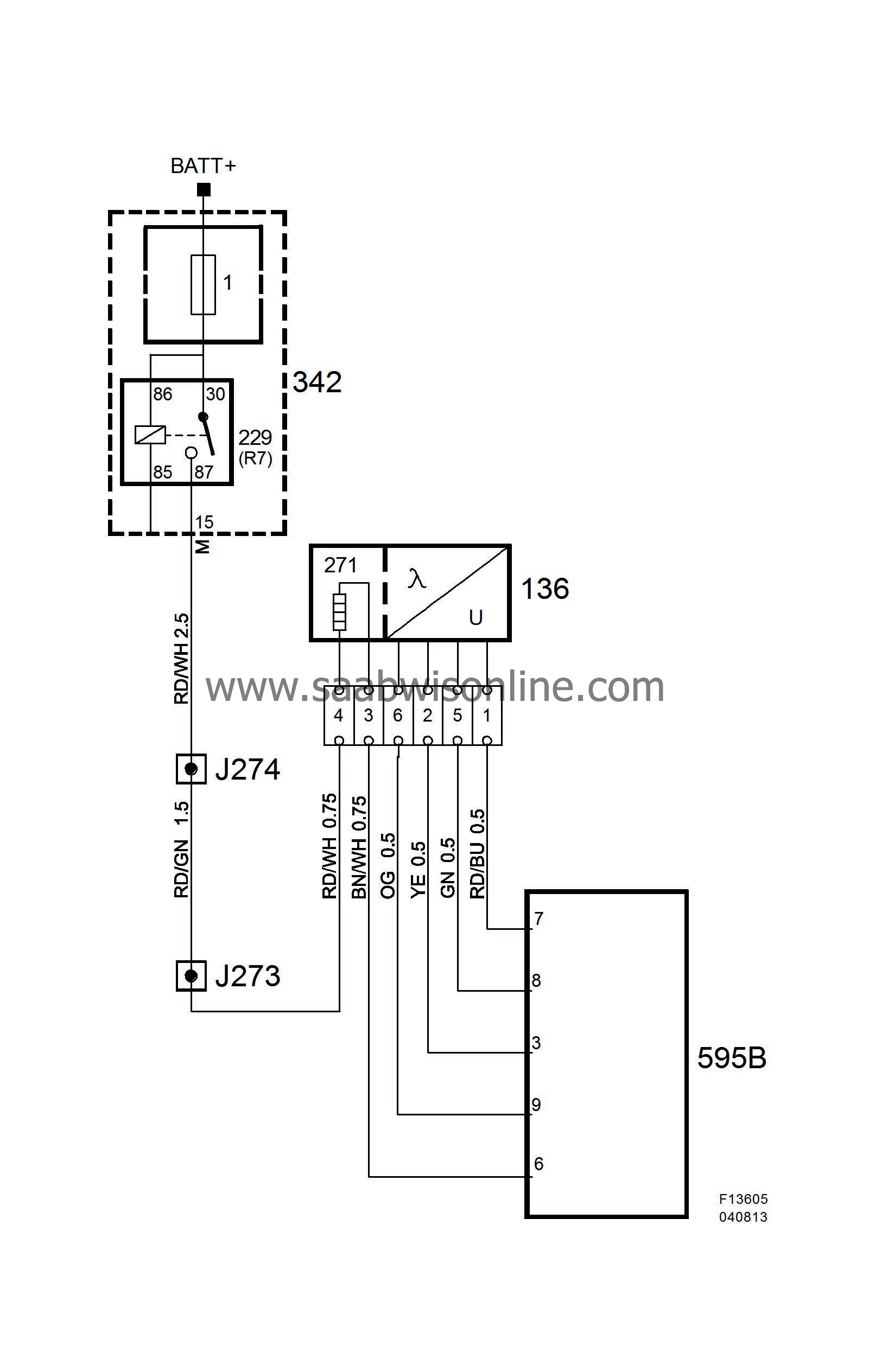PRE-RELEASE
Oxygen sensor (136)
| Oxygen sensor (136) |
| Location |
At front catalytic converter.
| Main task |
To measure air/fuel ratio in the exhaust gases.
The measured value is used to provide the best exhaust purification possible.
| Type |
This is a broadband oxygen sensor with preheating.
| Function |
A broadband oxygen sensor is considerably more complex than a narrow band oxygen sensor (which is used for petrol engines). It consists of a heated narrow band sensor (which itself consists of a reference cell and a Nernst cell) connected to a pump cell. The cells are made of ZrO2 with porous platinum electrodes.
The spacing between the cells is 10-50 micrometers. This gap is connected to the ambient exhaust gases via a small hole.
The pump cell pumps oxygen from the measuring gap to the surroundings if the exhaust gases have a lambda value over lambda=1 (this is only possible if the diesel engine always works with a large surplus of air). The amount of current through the pump cell is a measurement of the oxygen content of the exhaust gases. A high lambda value in the exhaust gases generates a relatively high pump current.
ECM regulates pump current so that the lambda value of the exhaust gases in the chamber is always lambda=1. When lambda=1 is achieved, the voltage from the measuring cell is 450 mV, a voltage that ECM tries to keep constant by varying pump current. Thus, it is pump current that provides information on the lambda value.
The temperature of the oxygen sensor must be regulated precisely. ECM does so by varying the preheating current in the heating element.
| Connection |
| Pin No. | Signal type | Description |
| 1 | Voltage. | Power supply from ECM to the pump cell. |
| 2 | Ground. | Grounding of oxygen sensor via ECM. |
| 3 | Ground. | Grounding of preheating via ECM. |
| 4 | Positive supply. | Power supply from main relay 229 to preheating. |
| 5 | Voltage | Calibration signal. |
| 6 | Voltage | Nernst cell measurement value. |
Diagram



